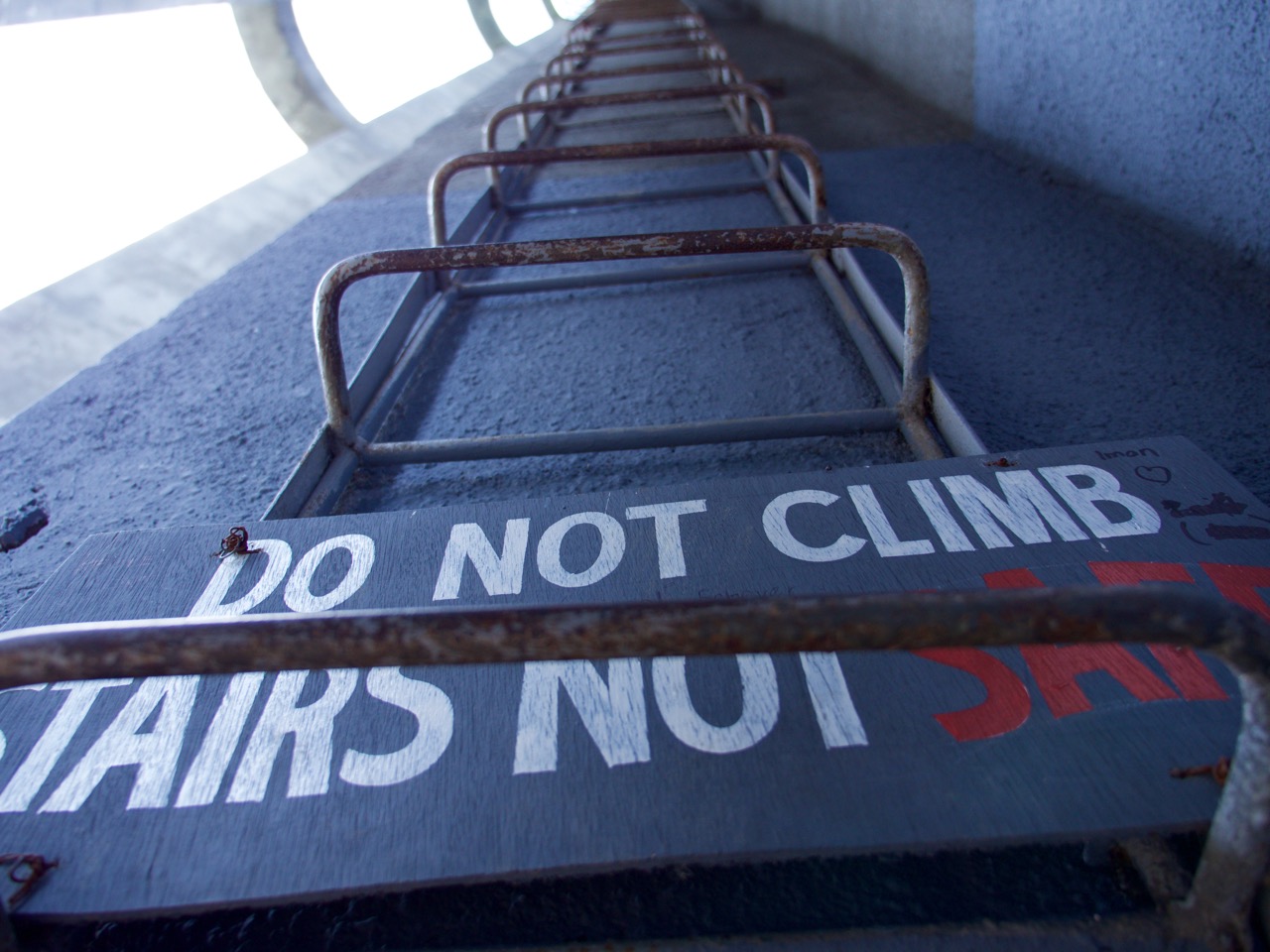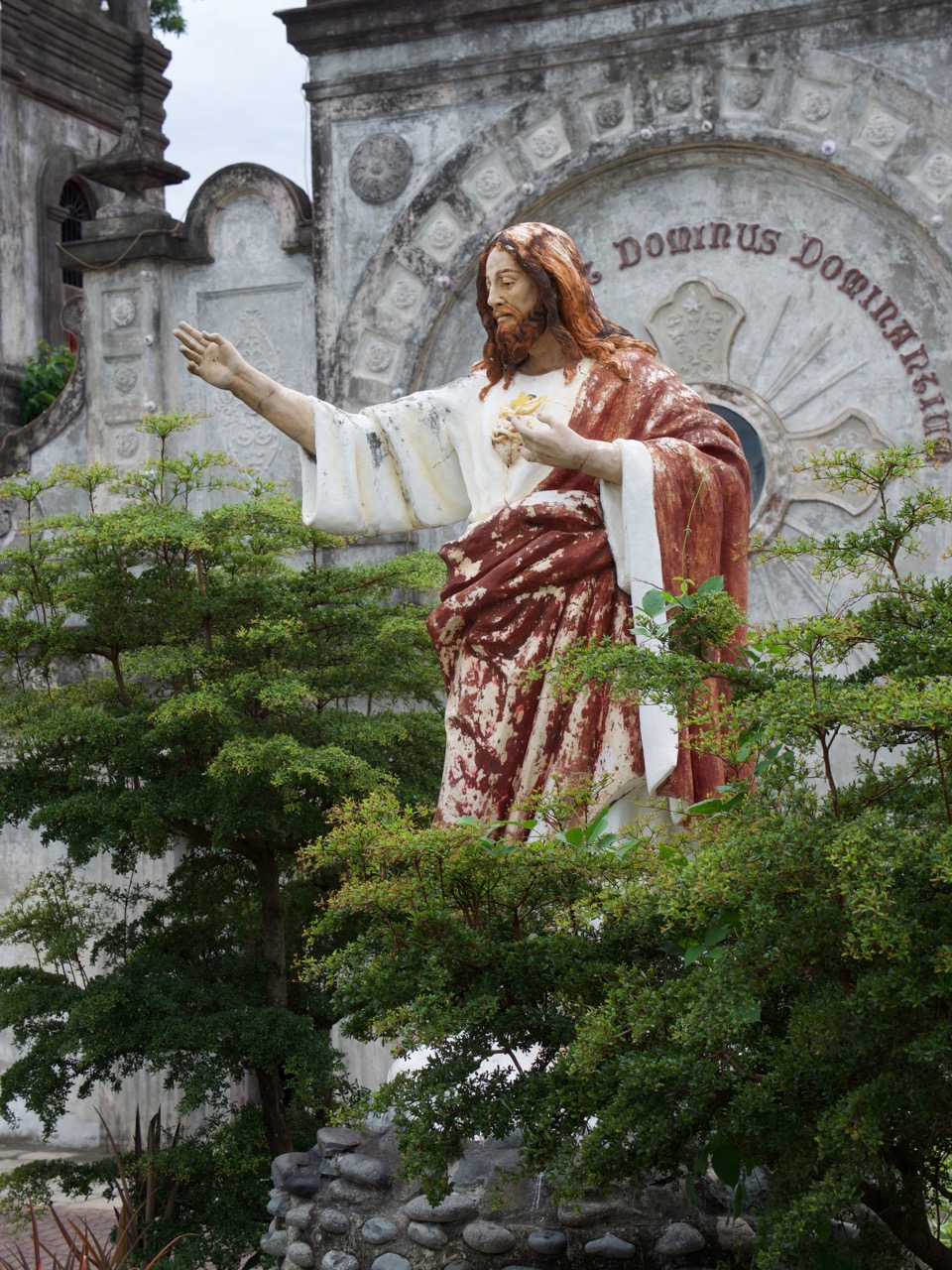Beth and I visited the Philippines for a week between Indonesia and Thailand. As I write this several days later, I’m still not quite sure how to approach blogging about our experience. Our exposure to the Philippines was narrow, limited only to central Luzon (the main island). And much of what I’m left with are merely impressions.
We stayed in Angeles City, the home of our friends Mel and Robert. I already wrote about the hotel. Bob and Mel were kind enough to pick us up at the Manila airport, and to take us back on our way out of the country (with the aid of their charming and effective driver, named Romee, as in Romeo). Being experts in the area, they took us on a lot of side trips out of the city. So most of what we learned about the geography, history, and culture of the area is thanks to them.
In addition to the field trips with Bob and Mel, Beth and I also wandered around some in the part of Angeles near our hotel. But we also spent some of the week just relaxing, reading, and writing. We’ve learned we can’t keep up a sightseeing pace where we’re always on the go and also be able to write about it, and keep our sanity. Some of my friends and family plan trips like that, where there’s always some activity scheduled. But at least for long vacations, that doesn’t work for us.
Our Day Trips
One of our day trips was to a Filipino cultural center. We saw some orchids, visited a couple of houses from native groups, and — best of all — caught a crowded dance performance that highlighted several styles of dancing from several hundred years. Oh, and we ate a good, big family style meal, which was a great introduction to some common Filipino dishes.


Another day trip was to the beach in Subic Bay. For decades there was a huge US navy base here to go with the huge US air force base at Angeles City. Both closed down in 1992, due — from what I can tell — a combination of damage from the Mount Pinatubo explosion, the Philippine government’s desire to get the American military out of their hair, and America’s changing desires in the post-Cold War era. The beach is private and there’s an admission fee. But one of the lifeguards has some vague family relationship to Mel, and so he treated us to a free private cabana. Bob explained that in the Philippines, nearly everyone is related to everyone else, and once you find what that connection is, you can call in favors like this. The flip side is that the lifeguard cousin will be back at Christmastime expecting a gift. We did some swimming, snorkeling, and eating, and I got a wonderful nap in the shade, which is my favorite thing to do on any beach.
Everyone’s heard of the Bataan Death March, and one of our day trips was related to that. I had heard the name but didn’t know the details until we went to a huge memorial park and monument for it. My friends with good liberal arts educations probably know all this, but the history of the thing was new to me: In World War II, the Japanese took over most (all?) of the Philippines. They rounded up the surviving enemy forces, mostly men from the Filipino and US armies, and marched them non-stop to Camp O’Donnell. That was originally a US and Filipino army base which the Japanese turned into a prison camp. The Japanese treated their prisoners brutally, on par with how the Nazis treated Jews in their camp. Thousands died on the way to the camp during the death march, and then the rest died while held in the camp. Years later, the government built this beautiful monument in honor of those who died, called the Capas National Shrine.




Another day trip was to “the lahar church”. Mount Pinatubo exploded in 1991, and the ash from it did huge damage in the short term, but also in the long term. The lahar, which I guess is the fluid volcanic ash that comes out of a volcano, covered a huge area, destroying villages, farms, etc. But it also built up in the river. And every once in a while, the water blocked by the lahar would push more of it downstream. Well, four or five years after Pinatubo, when you might think everyone would assume the danger has all passed, a huge pile of this lahar re-liquified and came surging down the river. It covered even more villages and farms, and so on, and buried the ground level of this Catholic church. They couldn’t remove the lahar that had re-solidified, so they remodeled it so that what would be the second floor is now the first floor. Inside and out, it looks like a pretty normal church except that all the big archways are missing the bottom parts.



The last little trip I’ll mention wasn’t a day trip at all; it was a night trip. Beth, Mel, and I took a stroll down “Walking Street” in Angeles City, while Bob stayed with the car (trying in vain to find a parking space). Walking Street is the epicenter of the local prostitution business, and by some accounts is where most sex-for-pay in the Philippines happens. It used to be divided between Manila, Clark, and Subic, but the mayor of Manila drove the prostitutes out of town (figuratively, I assume). Most of them relocated to Angeles City. Walking Street is a pedestrian street with dozens of bars on each side. Outside each one a cadre of Filipinas in matching clothes entices people to come inside, and from there the customers are welcome to choose one (or more) for the evening. We got propositioned plenty of times, though mostly by people wanting to sell us cigarettes.
Sort of Western, but Not Really
I got the impression from our stay in the Philippines that in some ways the country has more of a “western” feel than I expected, and certainly more than Indonesia, Thailand, and Cambodia. This wouldn’t be a surprise since the Philippine Islands have been so heavily influenced by Spain and the United States for the past four hundred years. But then I started to feel that the similarities are kinda superficial.
In public spaces, the music all sounds very western. They seem to like their music loud, so it’s very noticeable. And the music played in public buildings, in restaurants, in shopping areas, and on the streets is mostly pop music from the US. But as I listened more closely, I realized a weird pattern. I’d hear a popular song from the past 40 years, but it was a cover version. The more I paid attention, the more I noticed that a lot of the songs I thought were The Beatles, Nirvana, Norah Jones, etc. were actually weirdly similar cover versions. Someone recorded a note-for-note duplicate of the original, and then recorded a singer whose voice is 95% the same as the original singer. But there would be subtle differences, like the vocal phrasing was off or guitar notes that weren’t quite the same as the original.
Usually, when a musical group does a cover version, they put their own signature on it. There’s no point in the Red Hot Chili Peppers trying to sound exactly like Jimi Hendrix, because that’s impossible. So when they covered “Fire” they did it their own way. But these cover versions I heard all over in the Philippines were clearly intended to food the casual listener into thinking they were the original. Why would someone do that? Is it so they don’t have to pay royalties? I don’t really know. If you know, leave me a comment.
Another very western influence was the fast food joints. We saw KFC and McDonald’s everywhere. And one thing that surprised me is that McDonald’s seems to be just as popular, if not more so, for their fried chicken than for hamburgers. That’s what most people I saw were ordering, and that’s all that’s advertised on their billboards. So KFC makes fried chicken, McDonald’s makes fried chicken, and Jollibee (the local Filipino fast food chain) makes fried chicken. So much fried chicken! But it’s all got a Filipino touch, such as serving it with rice instead of mashed potatoes, and serving gravy or a similar sauce on everything. One thing I saw advertised that simultaneously tantalized and disgusted me was fried chicken with a warm cheese sauce poured over the top, like convenience store nacho cheese in America. I never got a chance to try it, though.
And another Filipino twist on the American style fast food? Guns. Every fast food joint had at least one armed guard at the door, carrying either an automatic rifle or a combat shotgun. It was a bit weird at first, but I got used to it. And clearly none of the locals mind. Bob explained that the armed guards were everywhere because Filipinos naturally mistrust each other. I guess someone’s afraid a burglar is going to come steal the Colonel’s secret recipe or something.
Similar to fast food was Starbucks. There were a few around, and we went to one on a morning that the restaurant we really wanted to try decided not to open that day. This Starbucks, at least, is open 24/7. The coffee drinks are very nearly as expensive as in the US. Not quite, but almost. And that’s a huge amount of money in Philippine terms. Some days, Beth and I had an entire meal for two for the price of one Starbucks mocha. But the food at Starbucks cost much less than in the US. So it seems they scaled the food prices to the local market, but not the coffee prices. That was a bit weird. I’m used to a breakfast sandwich costing roughly the same as a coffee drink, not 1/4 as much.
Here is a Huffington Post article that Bob turned me on to that may explain the strange quasi-western behaviors we saw while there, including the surprisingly uncoordinated service we got at our hotel.
Philippines’ Shallow Capitalism: Westernization Without Prosperity

Todd, you said:
“Thousands died on the way to the camp during the death march, and then the rest died while held in the camp. ”
But there were some survivors; not many but probably at least 100 Americans based on what I’ve read.